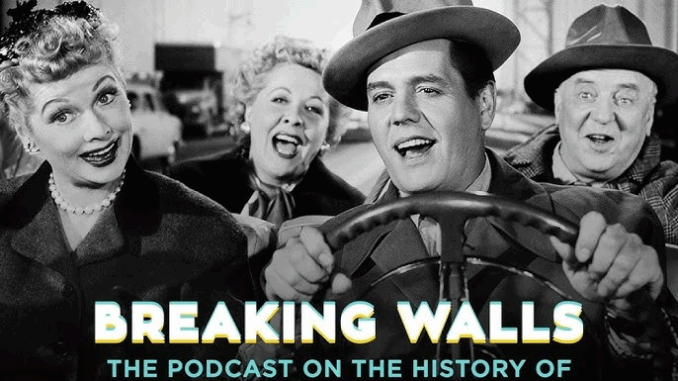
I Love Lucy and The Andy Griffith Show stand as two monumental pillars of classic American television comedy. Both shows achieved massive success, won countless awards, and remain beloved staples in syndication decades after they aired. I Love Lucy, starring the incomparable Lucille Ball, premiered in 1951, while The Andy Griffith Show debuted almost a decade later in 1960.
Despite their shared status as classic sitcoms, the shows employed fundamentally different comedic styles and emotional tones. For many viewers, this single major difference became the decisive factor in their preference, leading them to feel a deeper, more enduring connection with the tranquility and moral sincerity of Mayberry over the frantic energy of the Ricardos’ Manhattan apartment.
The one major difference lies in their primary mode of comedy and conflict resolution: Slapstick, situational chaos versus Character-driven, gentle moral lessons.
1. The Chaos of I Love Lucy: Driven by Situational Slapstick
I Love Lucy is, at its core, a masterpiece of situational comedy built upon physical humor and escalating chaos.
The Lucy Formula
The entire premise of the show revolves around Lucy Ricardo’s relentless, ill-conceived schemes to break into show business or escape the confines of domestic life, usually against the express wishes of her husband, Ricky. The comedy is derived from the plot’s escalation—a small lie turns into a massive undertaking, culminating in a spectacular, often physical, payoff.
- Slapstick and Physicality: The defining moments of Lucy are physical: the famous grape stomping, the speed-eating of chocolates on the conveyor belt, or Lucy getting trapped in various costumes and predicaments. The comedy is immediate, visual, and highly energized.
- The Conflict: The conflict is almost always instigated by Lucy’s ineptitude or deception. The resolution is Ricky, often exasperated, stepping in to clean up the mess and restore order, often through a sharp, final word. The character of Lucy is deliberately immature and chaotic, providing the engine for the plot, but rarely showing growth. The humor comes from her failing spectacularly.
- Tension and Release: The show is structured to build tension to an absurd degree, release it with a massive laugh (aided by a live studio audience), and reset for the next week. This energy is electric but can feel exhausting to some viewers.
2. The Calm of The Andy Griffith Show: Driven by Moral Character
In stark contrast, The Andy Griffith Show presented a world where the conflict was internal and the comedy was derived from the gentle absurdity of beloved, static characters.
The Mayberry Formula
Set in the idyllic, fictional small town of Mayberry, North Carolina, the show’s protagonist, Sheriff Andy Taylor, was the rock-solid center of wisdom and calm who rarely created his own problems. Instead, the problems were created by the delightful, but flawed, characters around him—most notably, Deputy Barney Fife (Don Knotts).
- The Moral Lesson: The central function of an Andy Griffith Show episode was often a moral or ethical lesson. Barney’s vanity, Opie’s youthful mischief, or a town eccentric’s misunderstanding would disrupt Mayberry’s harmony. Andy’s role was to use his calm, patient, and sly wisdom to teach the flawed character a lesson, allowing them to save face while learning.
- Comedy of Incompetence: The comedy comes from character-based incompetence, particularly Barney Fife’s overzealous, inept policing. Barney is the show’s main source of slapstick, but his physical gags and over-the-top reactions are always tied to his deep-seated emotional insecurity.
- Conflict Resolution: Unlike Lucy, where chaos is cleaned up by an outsider (Ricky), in Andy Griffith, the conflict is resolved internally by character understanding and growth. Andy doesn’t yell; he guides. This made the humor feel gentle, warm, and often deeply satisfying.
The Major Difference That Tilted Fan Preference
The biggest point of divergence, which led some fans to prefer Andy Griffith, was the character growth and the emotional safety net.
The Sincerity Factor
In I Love Lucy, the audience knows by the end of the episode, Lucy will be back scheming next week. There is no real change, just a momentary restoration of order. While hilarious, this perpetual loop lacks emotional stakes.
In The Andy Griffith Show, the viewer is guaranteed that every ridiculous situation—whether it’s Barney losing his gun or Aunt Bee’s terrible pickles—will be handled with sincere wisdom and kindness by Sheriff Andy. The comedy is a vehicle for a moral lesson about human folly, not the end goal itself.
The Power of the Idealized Escape
The Andy Griffith Show premiered during the turbulent 1960s, a period marked by civil rights struggles, cold war anxieties, and a growing counter-culture. Mayberry offered viewers a powerful, idealized escape—a world of innocence where problems were always minor, solvable with good common sense, and violence was virtually nonexistent (Andy rarely even carried a bullet for his gun).
This sense of wholesome, moral reassurance was profoundly appealing. Fans didn’t just laugh; they felt safe and warm. While Lucy provided cathartic, boisterous laughter, Andy Griffith provided emotional comfort and a sense of enduring, small-town virtue. This gentle, sincere approach to comedy and conflict resolution created a deeper, more nostalgic bond for those seeking an idealized version of American life.
In the end, while I Love Lucy paved the way for the multi-camera sitcom and remains an untouchable comedic landmark, The Andy Griffith Show‘s preference for character, sincerity, and moral depth over pure slapstick chaos is the key difference that solidified its place in the hearts of those who prefer a little less energy and a lot more Mayberry warmth.
